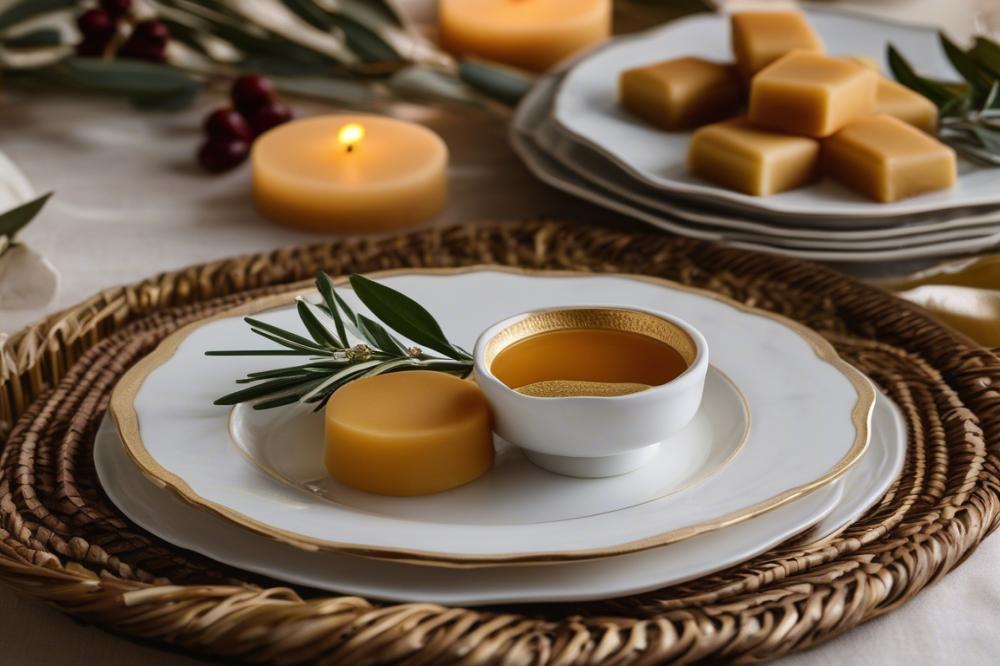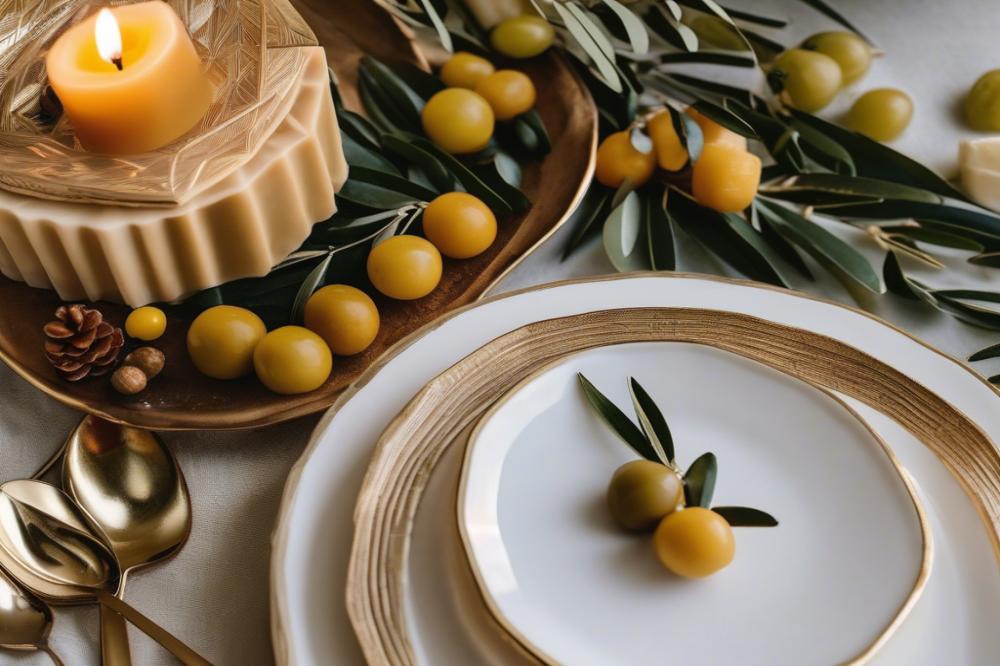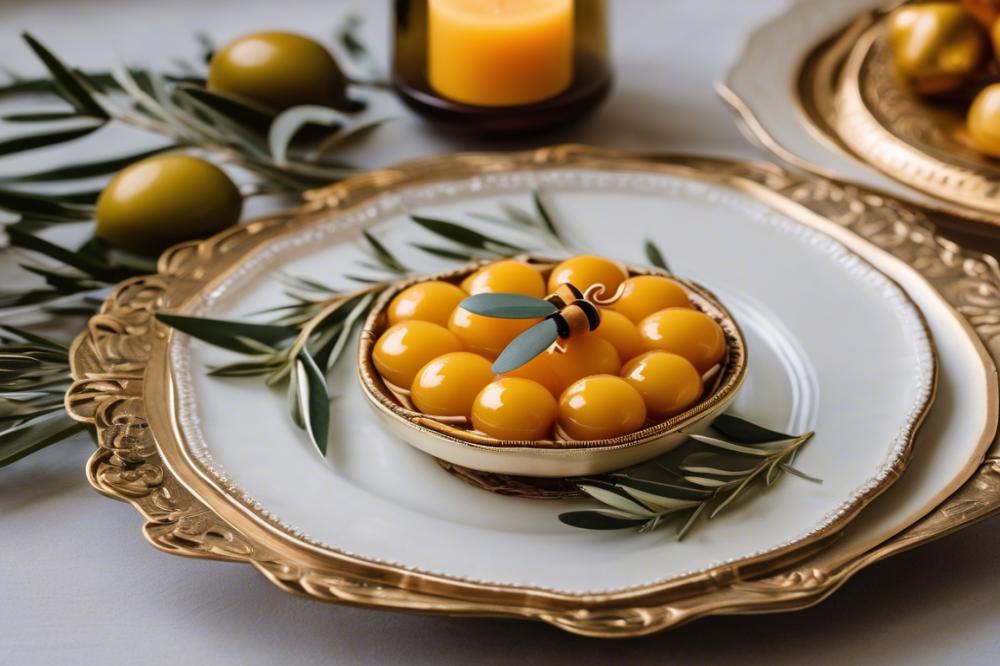Introduction
Amygdalota is a cherished dessert in Greece, known for its rich flavor and delightful texture. This traditional pastry highlights almonds, lending it a unique identity within Greek cuisine. It serves as a sweet treat that brings warmth to both everyday meals and festive occasions.
During celebrations, families often prepare these almond cookies, sharing them with friends and loved ones. Their significance transcends mere taste; they symbolize a connection to heritage and culture. In many homes, making this recipe becomes a cherished ritual, infusing both kitchen and heart with joy.
The Mediterranean region boasts a rich baking culture, where ingredients like nuts and fruits thrive. Amygdalota embodies this spirit, marrying simple components into something extraordinary. Enjoying a piece transports you to sun-kissed groves, filled with the scent of blooming almonds. This delightful treat is more than just a dessert; it is a testament to the artistry of Greek marzipan and the traditions that have shaped a nation’s palate.
What is Amygdalota?


Amygdalota is a delightful traditional pastry that originates from Greece. It is primarily made from ground almonds, sugar, and egg whites. The result is a moist and chewy dessert that many enjoy, especially during festive occasions. This sweet treat holds a special place in Greek cuisine, often served alongside coffee or tea.
The history of amygdalota is rich and varied. Dating back to the Byzantine era, its roots are deeply embedded in Mediterranean culture. Over the centuries, recipes have evolved, reflecting regional tastes and ingredients. Many families pass down their own versions, adding personal touches that create unique flavors.
Variations of this dessert can be found across Greece. In certain regions, cooks might include spices like cinnamon or rose water to enhance the taste. Some even incorporate different types of nuts or toppings, while others keep it simple to highlight the almond flavor. These regional differences showcase the versatility of this baking tradition.
This pastry is often compared to marzipan due to its almond base. Marzipan is a sweet paste made primarily from almonds and sugar, usually shaped into figures or used in confections. Like marzipan, amygdalota brings a similar rich flavor and texture, making it a beloved dessert. Many people enjoy both, celebrating the almond at the heart of each recipe.
Ingredients and Measurements


To create this delightful sweet treat, you need a specific list of ingredients with precise quantities. Gathering everything before you begin is wise for a smooth baking experience.
- Almond flour: 2 cups
- Granulated sugar: 1 cup
- Egg whites: 2 large
- Orange blossom water: 2 tablespoons
- Zest of 1 lemon
- Pinch of salt
Nutrition is important in every recipe, especially in Mediterranean dishes. Each ingredient brings its own benefits. Almond flour is rich in healthy fats and protein, making it a nutritious choice.
Meanwhile, granulated sugar carries a higher calorie content, which is typical in many desserts. This ingredient adds sweetness, making the pastry enjoyable. Egg whites provide a low-calorie source of protein, adding texture and structure to your mix.
Aromatic benefits arise from orange blossom water. This ingredient not only contributes to flavor but also enhances the overall sensory experience of the pastry. Lastly, the zest of lemon is a subtle yet bright addition that lifts the flavors of this traditional Greek delicacy.
Method of Preparation


Preheating the Oven
Start by preheating your oven to 350°F (175°C). This step is crucial for achieving that lovely golden color on your pastries. While the oven heats, you can gather your ingredients and prepare your workspace.
Mixing Dry Ingredients
In a large mixing bowl, combine the ground almonds and sugar. It is essential to sift the almond flour to avoid any lumps. A pinch of cinnamon can be added to enhance the flavor. Stir these dry ingredients together until they are well mixed.
Beating Egg Whites and Combining
Take some fresh egg whites and place them in a clean bowl. Using an electric mixer, beat the egg whites until they form stiff peaks. This process incorporates air, making your dessert light and fluffy. Gradually fold the beaten egg whites into your dry mixture. Use a spatula to gently combine them, being careful not to deflate the egg whites.
Forming the Pastry Shapes
Now, it’s time to shape your pastries. Take small portions of the combined mixture and roll them into balls or flatten them into little disks. For a festive touch, you can shape them into crescents or other fun forms. Place each shaped piece on a baking tray lined with parchment paper. This will prevent sticking and help with easy cleanup.
Baking Process and Checking for Doneness
Slide the baking tray into the preheated oven. Watch your pastries closely as they bake for about 15 to 20 minutes. The goal is to get a lovely golden-brown hue. To check for doneness, look for a firm texture on the outside, while the inside remains soft. A gentle touch should feel slightly springy but not raw. Once done, allow them to cool on a wire rack before serving or enjoying as a delightful addition to your dessert table.
Tips for Perfect Amygdalota


Common Pitfalls and How to Avoid Them
Baking can sometimes lead to unexpected challenges. One frequent issue is overworking the dough. This can cause the pastry to become tough instead of light and airy. Mixing the ingredients enough to combine them is key. A delicate touch is necessary for the best results. Another common mistake is using old or stale almonds. Fresh almonds bring a wonderful flavor and texture to this sweet treat. Always check the expiration date and smell them before use.
Suggestions for Variations on the Recipe
Experimenting can elevate your dessert to new levels. For example, adding a hint of orange or lemon zest brightens the flavor immensely. Chocolate lovers might consider incorporating cocoa powder to create a unique twist. You could also fold in spices like cinnamon or nutmeg for a warm spice note. Using different forms of almonds, like roasted or flavored varieties, can add depth. Each variation can give this traditional Mediterranean pastry its own character.
Ideal Storage Methods to Maintain Freshness
Proper storage is vital for keeping your Amygdalota delightful. Place the pastries in an airtight container to keep moisture out. A cool, dry place works best to prolong freshness. If you want to extend their life even longer, consider freezing them. Wrap each one in plastic wrap, then store in an airtight bag. This method preserves the taste and texture for several weeks. Thaw them gently at room temperature before enjoying them again. Crafting these treats will bring a little piece of Greek cuisine into your home, especially during festive occasions.
Serving Suggestions
Traditional Ways to Serve Amygdalota
Serving this almond pastry is an art. Many Greeks enjoy it plain, allowing the rich flavor of the almonds to shine through. Often, it is presented on decorative plates during gatherings. Some even sprinkle powdered sugar on top for an elegant touch. Other variations incorporate a hint of lemon or orange zest, which adds freshness.
Pairing with Coffee or Tea
This sweet treat is delicious when accompanied by a steaming cup of coffee. Espresso makes a strong choice, balancing the sweetness of the dessert. Alternatively, tea can offer a lighter pairing. A herbal tea or something minty will enhance the experience wonderfully. Each sip complements the pastry, creating a harmonious blend of flavors.
Presentation Ideas for Festive Occasions
Festive gatherings call for eye-catching displays. For special events, try arranging pieces on a tiered cake stand. This creates an inviting atmosphere. Use colorful linens that echo the Mediterranean theme. Small paper doilies under each pastry add a vintage feel. Finally, surrounding the display with seasonal fruits can provide an appealing contrast, enticing guests to indulge.
Final Thoughts
Amygdalota holds a special place in Greek culture as a delightful sweet treat. Made primarily with almond and sugar, this pastry is not just a dessert; it is a reflection of tradition and heritage. Sharing this delicacy often brings family and friends together, creating moments filled with joy and connection.
Trying your hand at this recipe is quite rewarding. You will discover the rich flavors and textures that have been cherished for generations. Don’t hesitate to involve your loved ones in the baking process. Cooking can be a wonderful bonding experience, and sharing the finished product is even better.
Preserving the baking traditions of the Mediterranean is essential. Each dessert tells a story and connects us to our roots. By making amygdalota, you keep a piece of history alive while creating sweet memories in your own kitchen. Whether enjoyed on special occasions or as a simple treat after dinner, it brings a taste of Greece to your home. So, gather your ingredients, roll up your sleeves, and enjoy the process. Your efforts will yield not just a delicious pastry but also a legacy of culinary delight.



